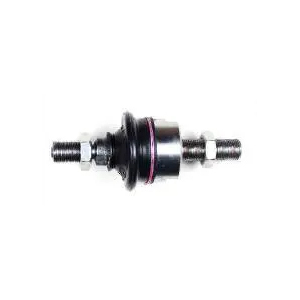Product Description
A cylinder ball joint, also known as a spherical rod end or rod end bearing, is a mechanical component used in various applications to provide a flexible connection between two objects. It consists of a spherical ball enclosed within a housing, allowing for angular movement and load transmission.
FAQs:
Q: What is the purpose of a cylinder ball joint?
A: The cylinder ball joint serves as a flexible linkage between two objects, allowing for rotational or angular movement while transmitting loads. It provides a pivot point that accommodates misalignment, reduces friction, and enables smooth motion in applications such as steering systems, suspension systems, and mechanical linkages.
Q: How does a cylinder ball joint work?
A: A cylinder ball joint consists of a spherical ball encased within a housing or socket. The ball is attached to one object or component, while the housing is connected to another. The ball and housing allow for articulation and rotation, enabling movement in multiple axes. This design permits flexibility while maintaining load-bearing capabilities.
Q: Where are cylinder ball joints used?
A: Cylinder ball joints find applications in a wide range of industries. They are commonly used in automotive suspension systems, steering linkages, control arms, and tie rods. Cylinder ball joints are also utilized in industrial machinery, robotics, aerospace equipment, and various mechanical linkages where flexibility and load transmission are required.
Q: What are the advantages of using cylinder ball joints?
A: Cylinder ball joints offer several advantages. They provide flexibility and articulation, allowing for movement and rotation in different directions. This flexibility helps accommodate misalignment, reduce stress on connected components, and improve overall system performance. Cylinder ball joints also help dampen vibrations, reduce friction, and enhance durability in load-bearing applications.
Q: How do I maintain a cylinder ball joint?
A: Proper maintenance of a cylinder ball joint typically involves periodic inspection for wear, damage, or signs of inadequate lubrication. Greasing the joint at regular intervals, as recommended by the manufacturer, helps maintain smooth operation and extend the lifespan of the ball joint. If any issues are detected, such as excessive play or visible damage, it is advisable to consult the manufacturer's guidelines or seek professional assistance for maintenance or replacement
